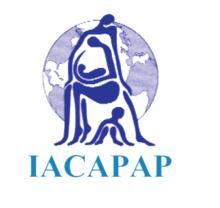International Association for Child and Adolescent Psychiatry and Allied Professions
The International Association for Child and Adolescent Psychiatry and Allied Professions (IACAPAP) is a non-governmental international association that advocates for the "promotion of the mental health and development of children and adolescents through policy, practice and research".[1] Its membership is mainly Latin and North American, European, and Pacific Rim-based.
 | |
| Abbreviation | IACAPAP |
|---|---|
| Predecessor | International Committee for Child Psychiatry |
| Formation | 1937 |
| Type | NGO |
Region served | Latin and North America, Pacific-Rim, Europe |
History
In 1935 a group of practitioners in the new medical field of child psychiatry started work to establish and expand mutual contacts in spite of the social and political turmoil surrounding World War II.[2] Two years later, they formed the "International Committee for Child Psychiatry".[3] Georges Heuyer, the then head of the "Clinique annexe de neuropsychiatrie infantile" at the Salpêtrière in Paris, organized and chaired the first congress there, calling it the "Premier Congrès international de psychiatrie infantile, Paris, 24 juillet au 1er août 1937" ["First international conference on child psychiatry"].[2]
The second international congress took place in London in 1948. During this meeting the international committee was renamed the "International Association for Child Psychiatry" (IACP) with about 30 national societies as members. All countries were to have access to IACP, however a credentials committee was set up to verify the qualifications of each applicant.[2]
The name was changed again during the Lisbon congress of 1958, this time to the "International Association for Child Psychiatry and Allied Professions" (IACP&AP). At the 9th Congress (Melbourne, Australia, 1978) adolescents were incorporated in the official name: "The International Association for Child and Adolescent Psychiatry and Allied Professions" (IACAPAP).[2]
In 1954 they incorporated as a tax-exempt organization in Massachusetts. Today, the IACAPAP is registered in Geneva, Switzerland, as a non-government organization (NGO) structured as a corporation and empowered as a juridical entity according to the Swiss Civil Code and the Constitution.[4]
During the 1960s Acta Paedopsychiatrica served as the IACAPAP's official scientific journal. The on-line journal, Adolescent Psychiatry and Mental Health is the official scientific journal of IACAPAP.[4]
Donald J. Cohen became a vice-president of the IACAPAP in 1986,[5] and was president from 1992–98. Its membership is global, but mainly North/Latin American, Asia-Pacific and Europe based, uniting many national organizations of child and adolescent psychiatry.[6] Japan joined the organization in 1962.[7] Until 1996, Tokyo hosted meetings of the regional Asian Society for Child and Adolescent Psychiatry and Allied Profession.[8]
A world congress convenes every four years. At the 13th such congress in Dublin, Ireland, in 1982, Sherman F. Feinstein was the Adolescent Psychiatry Program Chairman.[9] The 16th World Congress was held in Berlin in August 1994.[10] The Secretary General as of 2000 was Ian M. Goodyer, a professor who founded the department of Child and Adolescent psychiatry at Cambridge University.[11] The 19th Congress was held in Istanbul in 2008.[12]
References
- "Welcome to IACAPAP". International Association for Child and Adolescent Psychiatry and Allied Professions. Retrieved 4 March 2015.
- Schleimer K (2012). 75 Years with IACAPAP – the history of IACAPAP. IACAPAP.
- Diler, Rasim Somer (28 February 2007). Pediatric bipolar disorder: a global perspective. Nova Publishers. p. 195. ISBN 978-1-59454-981-6. Retrieved 18 December 2012.
- IACAPAP web site
- "The Yale Child Study Center Centennial" (PDF). International Association of Child and Adolescent Psychiatry and Allied Professions. June 2011. pp. 9–19. Archived from the original (PDF) on 27 August 2016. Retrieved 18 December 2012.
- "Full Members". International Association for Child and Adolescent Psychiatry and Allied Professions. Retrieved 18 December 2012.
- Remschmidt, Helmut; Belfer, Myron L; Goodyer, Ian M. (16 October 2004). Facilitating Pathways: Care, Treatment, and Prevention in Child and Adolescent Mental Health. Springer. p. 60. ISBN 978-3-540-21088-7. Retrieved 18 December 2012.
- Hanada, Masanori (12 February 1999). Recent Progress in Child and Adolescent Psychiatry. Springer. p. 5. ISBN 978-4-431-70243-6. Retrieved 18 December 2012.
- Esman, Aaron H. (1 December 1998). Adolescent Psychiatry: Developmental and Clinical Studies: The Annals of the American Society for Adolescent Psychiatry. Taylor & Francis Group. p. 12. ISBN 978-0-88163-196-8. Retrieved 18 December 2012.
- Becker, Katja; Schmidt, Martin H.; Wehmeier, Peter M. (2006). The Noradrenergic Transmitter System in ADHD Principles and Implications for Treatment. Georg Thieme Verlag. p. 74. ISBN 978-1-58890-579-6. Retrieved 18 December 2012.
- Goodyer, Ian M. (March 2000). The Depressed Child and Adolescent. Cambridge University Press. p. 1. ISBN 978-0-521-66081-5. Retrieved 18 December 2012.
- Levav, Itzhak (10 September 2009). Psychiatric and Behavioral Disorders in Israel: From Epidemiology to Mental Health Action. Gefen Publishing House Ltd. p. 46. ISBN 978-965-229-468-5. Retrieved 18 December 2012.